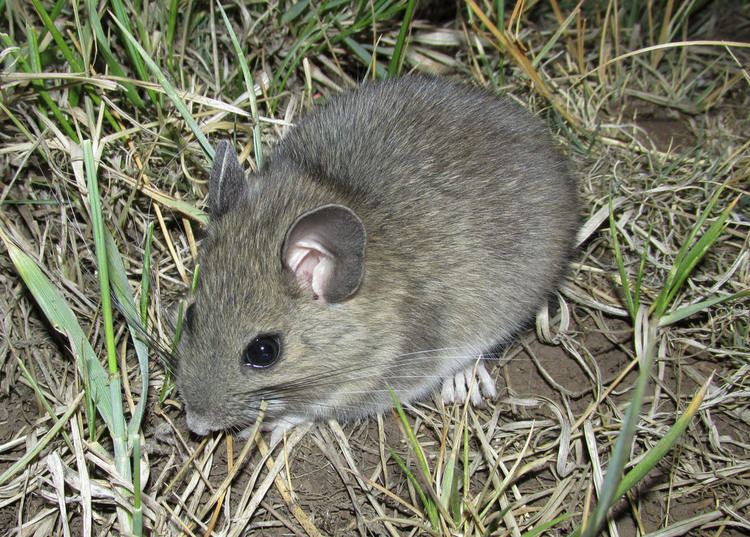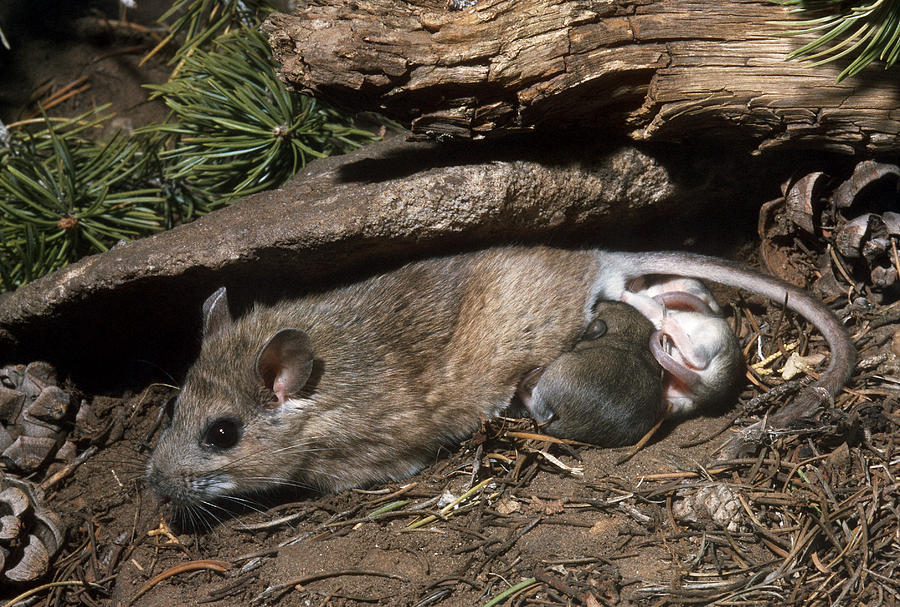The Mexican woodrat (Neotoma mexicana) is a small rodent species native to the southwestern United States and Mexico, captivating researchers and wildlife enthusiasts alike with its unique behaviors and ecological role. This article delves deep into the life of the Mexican woodrat, exploring its habitat, behavior, diet, and interactions with the ecosystem. Whether you're a student, researcher, or simply curious about nature, this guide provides valuable insights into the world of the Mexican woodrat.
As one of the most intriguing members of the rodent family, the Mexican woodrat has become a focal point for studies on animal behavior and ecosystem dynamics. Their ability to thrive in diverse environments and construct elaborate stick nests has earned them a special place in the hearts of wildlife enthusiasts and scientists alike.
In this article, we will cover everything you need to know about the Mexican woodrat, from its physical characteristics and habitat preferences to its role in maintaining ecological balance. By the end of this guide, you will have a comprehensive understanding of why this rodent is so vital to its ecosystem and how it contributes to biodiversity.
Read also:Dq Standard Celebration Cake A Sweet Milestone For Every Special Occasion
Table of Contents
- Biology and Physical Characteristics
- Habitat and Distribution
- Diet and Feeding Habits
- Behavior and Social Structure
- Ecological Role and Importance
- Threats and Conservation Status
- Scientific Research and Studies
- Comparison with Other Woodrat Species
- Human Interactions and Cultural Significance
- Future Research Directions
Biology and Physical Characteristics
The Mexican woodrat is a medium-sized rodent with distinctive physical traits that set it apart from other members of the Neotoma genus. Adult Mexican woodrats typically weigh between 150 and 250 grams, with a body length ranging from 15 to 20 centimeters, excluding their long, scaly tails.
One of the most notable features of the Mexican woodrat is its fur, which is typically grayish-brown on the back and lighter on the underside. This coloration provides effective camouflage in their natural habitats, helping them avoid predators. Additionally, their large, rounded ears and prominent black eyes enhance their sensory capabilities, allowing them to detect potential threats and locate food sources efficiently.
Physical Adaptations
The Mexican woodrat has several physical adaptations that enable it to thrive in its environment:
- Strong limbs: Their powerful legs allow them to climb trees and navigate rocky terrains with ease.
- Prehensile tail: The long, scaly tail serves as a balancing tool while climbing and can also be used to carry objects back to their nests.
- Sharp teeth: The continuously growing incisors of the Mexican woodrat are perfect for gnawing on tough plant materials.
These physical traits make the Mexican woodrat well-suited for its role in the ecosystem, as it efficiently collects and stores food in its stick nests.
Habitat and Distribution
The Mexican woodrat is primarily found in the southwestern United States and northern Mexico, where it inhabits a variety of ecosystems, including deserts, grasslands, and wooded areas. This adaptability allows the species to thrive in both arid and more temperate environments.
One of the key factors influencing the distribution of the Mexican woodrat is the availability of suitable nesting sites. They are particularly drawn to areas with an abundance of sticks, twigs, and other debris, which they use to construct their elaborate nests.
Read also:Karan Arjun 1995 A Cinematic Masterpiece That Defined Indian Cinema
Habitat Preferences
While the Mexican woodrat can survive in a range of habitats, it tends to favor the following environments:
- Desert scrublands: These areas provide the necessary materials for building nests and offer protection from predators.
- Pinyon-juniper woodlands: The dense vegetation in these regions offers both food and shelter for the woodrat.
- Riparian zones: Areas near water sources often have lush vegetation, making them ideal for foraging.
Understanding the habitat preferences of the Mexican woodrat is crucial for conservation efforts, as it highlights the importance of preserving these specific ecosystems.
Diet and Feeding Habits
The Mexican woodrat is primarily herbivorous, with a diet consisting of leaves, seeds, fruits, and other plant materials. However, they are opportunistic feeders and may occasionally consume insects or small vertebrates if given the chance.
One of the most fascinating aspects of the Mexican woodrat's diet is its ability to store food for future use. This behavior is particularly important in regions with seasonal fluctuations in resource availability, as it allows the woodrat to survive periods of scarcity.
Food Storage Techniques
The Mexican woodrat employs several strategies to store food effectively:
- Cache creation: They create caches, or hidden storage areas, within their nests to store food for later consumption.
- Selective hoarding: The woodrat selectively hoards certain types of food, prioritizing items that are high in nutritional value or have a longer shelf life.
- Seasonal adjustments: Their hoarding behavior changes with the seasons, reflecting the availability of different food sources throughout the year.
This efficient food storage system not only benefits the Mexican woodrat but also plays a role in seed dispersal and plant propagation within its ecosystem.
Behavior and Social Structure
Mexican woodrats are solitary animals, with each individual maintaining its own territory. However, they occasionally interact with other woodrats, especially during mating season or when resources are abundant.
Their behavior is heavily influenced by their need to survive in challenging environments. For example, the construction of stick nests serves multiple purposes, including protection from predators, insulation from extreme temperatures, and storage of food.
Social Interactions
Although Mexican woodrats are primarily solitary, they do engage in certain social behaviors:
- Mating rituals: During the breeding season, males and females engage in elaborate courtship displays to attract mates.
- Parental care: Female woodrats invest significant time and energy in raising their young, providing them with food and protection until they are old enough to fend for themselves.
- Interactions with neighbors: While territorial disputes are common, Mexican woodrats sometimes tolerate the presence of neighboring woodrats, especially if resources are plentiful.
These social behaviors highlight the complexity of the Mexican woodrat's interactions with its environment and other members of its species.
Ecological Role and Importance
The Mexican woodrat plays a vital role in maintaining the balance of its ecosystem. Through its foraging and food storage behaviors, it contributes to seed dispersal and plant propagation, helping to sustain plant populations in its habitat.
Additionally, the nests constructed by Mexican woodrats provide shelter and habitat for a variety of other species, including insects, reptiles, and small mammals. This makes the woodrat an important contributor to biodiversity in its ecosystem.
Impact on Ecosystem Health
The presence of Mexican woodrats in an ecosystem can have several positive effects:
- Promoting plant growth: By dispersing seeds and creating favorable conditions for plant germination, woodrats help maintain healthy plant populations.
- Supporting other species: Their nests serve as refuges for numerous other animals, enhancing overall biodiversity.
- Controlling pest populations: As opportunistic feeders, Mexican woodrats may help regulate populations of certain insects and small vertebrates.
These ecological contributions underscore the importance of conserving the Mexican woodrat and its habitat.
Threats and Conservation Status
Despite its adaptability, the Mexican woodrat faces several threats to its survival. Habitat destruction, climate change, and predation by introduced species all pose significant risks to this fascinating rodent.
Conservation efforts are underway to protect the Mexican woodrat and its habitat. These initiatives focus on preserving critical ecosystems, controlling invasive species, and raising public awareness about the importance of this species.
Conservation Strategies
To ensure the survival of the Mexican woodrat, the following strategies are being implemented:
- Habitat preservation: Protecting the natural habitats of the woodrat, such as desert scrublands and pinyon-juniper woodlands.
- Invasive species management: Controlling the spread of non-native species that compete with or prey upon the woodrat.
- Research and monitoring: Conducting ongoing studies to better understand the needs and threats facing the Mexican woodrat.
By addressing these threats, conservationists hope to secure a future for the Mexican woodrat and the ecosystems it supports.
Scientific Research and Studies
Scientific research on the Mexican woodrat has provided valuable insights into its biology, behavior, and ecological role. Studies have examined everything from its nesting habits and diet to its interactions with other species and the impact of environmental changes on its population.
Data from these studies are crucial for developing effective conservation strategies and understanding the broader implications of changes in the woodrat's ecosystem.
Key Findings
Some of the key findings from recent research on the Mexican woodrat include:
- Adaptability to climate change: Studies suggest that Mexican woodrats may be able to adapt to changing environmental conditions, although this depends on the availability of suitable habitats.
- Role in seed dispersal: Research has confirmed the importance of the woodrat in promoting plant growth and biodiversity through its food storage behaviors.
- Interactions with predators: Observations have revealed complex interactions between Mexican woodrats and their predators, shedding light on the dynamics of predator-prey relationships in their ecosystems.
These findings highlight the ongoing importance of scientific research in understanding and protecting the Mexican woodrat.
Comparison with Other Woodrat Species
The Mexican woodrat is just one of many species within the Neotoma genus, each with its own unique characteristics and ecological roles. Comparing the Mexican woodrat with other woodrat species provides valuable insights into the diversity and adaptability of this fascinating group.
For example, while the Mexican woodrat is primarily found in arid and semi-arid regions, other species, such as the bushy-tailed woodrat (Neotoma cinerea), are more commonly associated with forested areas. These differences in habitat preferences reflect the varied ecological niches occupied by woodrats across North America.
Key Differences
Some of the key differences between the Mexican woodrat and other woodrat species include:
- Habitat preferences: Different species of woodrats are adapted to specific environments, from deserts to forests.
- Nesting behaviors: While all woodrats construct stick nests, the materials and construction methods may vary between species.
- Dietary habits: The specific foods consumed by each species can differ based on their habitat and available resources.
Understanding these differences helps researchers better appreciate the complexity and diversity of the woodrat family.
Human Interactions and Cultural Significance
While the Mexican woodrat is not typically considered a pest, it may occasionally come into conflict with humans, especially in areas where its habitat overlaps with agricultural or residential development. However, in many cultures, woodrats are viewed as symbols of resourcefulness and adaptability.
Efforts to promote coexistence between humans and Mexican woodrats focus on education and habitat preservation, encouraging people to appreciate the ecological value of this species.
Cultural Symbolism
In some Native American cultures, woodrats are seen as symbols of:
- Resourcefulness: Their ability to gather and store food is admired and respected.
- Adaptability: The woodrat's capacity to thrive in diverse environments serves as a lesson in resilience and flexibility.
- Connection to nature: As key players in their ecosystems,



